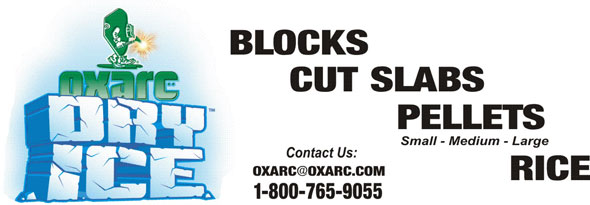
Dry Ice Blasting What, How, Why, & Savings

|
| What is dry ice? |
| Dry ice is carbon dioxide in solid form. It can be produced as pellets or blocks of various sizes. At atmospheric pressure, the temperature of dry ice is -79°C. Dry ice is odor-free, non-toxic and incombustible. Carbon dioxide is a natural part of the atmosphere. |
| What is Dry Ice Blasting? |
| Dry ice blasting is a revolutionary blasting method in which dry ice pellets replace traditional blasting materials like sand, water, glass and plastic. In contrast to sand blasting, etc., the process leaves no secondary waste material. The only waste to be disposed of is the coating that has been dislodged, and this can normally be swept or vacuumed from the floor beneath the treated object. The process is dry and non-conductive, and it is therefore suitable for use on electric motors and electrical circuitry. |
| How Does Dry Ice Blasting Work? |
| Dry ice pellets are accelerated in a jet of compressed air and strike the coating to be removed at velocities up to the speed of sound. Cleaning results from three effects: Kinetic Effect: When dry ice pellets strike a surface at the speed of sound, any coating on the surface is cracked and loosened. Thermal Effect: The low temperature of dry ice pellets makes the coating brittle, cracks it and loosens it as a result of reduced bonding between the coating and the underlying surface. This allows dry ice to permeate the coating. Explosive Effect – Sublimation: Dry ice penetrates the coating and immediately sublimes (passes directly from solid to vapor state). This results in a 700-fold increase in volume, an explosive effect that lifts the coating off the surface. |
| Why Should I Use Dry Ice Blasting Instead of Traditional Blasting Methods? |
| Dry ice blasting is a completely dry process. Dry ice blasting is non-toxic, non-conductive and non-abrasive. Dry ice vaporizes immediately on contact with treated surfaces. This gives several advantages in comparison with traditional blasting methods. With dry ice blasting there is no secondary waste material (sand, glass, plastic, etc.). The only waste to be swept or vacuumed up is the coating dislodged by the treatment. It is therefore possible to clean objects in which other blasting methods' residual blasting material would collect in every inaccessible corner. Dry ice blasting allows cleaning to be performed while machines are running, without the need for dismantling. This is, of course, of great economic importance as costly downtime can be eliminated or drastically reduced. |
| Does Dry Ice Blasting Have Economic Benefits? |
| Machinery can often be cleaned with dry ice blasting while it is running, without the need for dismantling and subsequent re-assembly. This is, of course, of great economic importance as costly downtime can be eliminated or drastically reduced. Costs connected with the disposal of blasting material and solvents are eliminated. Cleaning and maintenance payroll costs will often be reduced to a fraction of present levels by substituting dry ice blasting for traditional cleaning methods. Dry ice blasting treats material surfaces very gently. |



